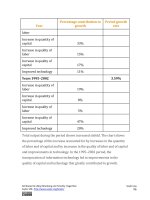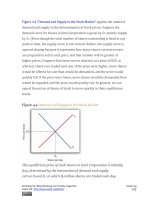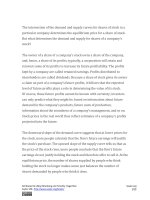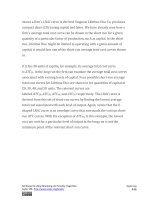Authors libby rittenberg 855
Bạn đang xem bản rút gọn của tài liệu. Xem và tải ngay bản đầy đủ của tài liệu tại đây (584.44 KB, 1 trang )
“The Case for Antitrust Enforcement,” Journal of Economic Perspectives,
17:4 (Fall 2003): 27–50; Robert W. Crandall and Clifford Winston, “Does
Antitrust Policy Improve Consumer Welfare? Assessing the
Evidence,” Journal of Economic Perspectives, 17:4 (Fall 2003): 3–26;
Michael F. Sproul, “Antitrust and Prices,”Journal of Political Economy, 101
(August 1993): 741–54.
ANSWER TO TRY IT! PROBLEM
In the case of Eastman Kodak, the Supreme Court argued that the rule
of reason be applied. Even though the company held a dominant
position in the film industry, its conduct was deemed reasonable. In
the proposed merger between United Shoe Machinery and Brown
Shoe, the court clearly chose to protect the welfare of firms in the
industry rather than the welfare of consumers.
[1] G. J. Stigler, “The Economists and the Problem of Monopoly,” American
Economic Review Papers and Proceedings 72:2 (May 1982): 8–9.
[2] Matt Krantz, “Merger Market Arrives At ’Good spot’; 2006 the Busiest
Takeover Year Since End Of ’90s Bull,” USA Today, November 7, 2006, p. 3B;
and Matt Krantz, “Big Day for Buyouts, But Tepid Pace Forecase To Continue;
Credit Crunch and Other Economic Fears Take Toll,” USA Today, December 18,
2007, p. 1B.
16.2 Antitrust and Competitiveness in
a Global Economy
Attributed to Libby Rittenberg and Timothy Tregarthen
Saylor URL: />
Saylor.org
855









